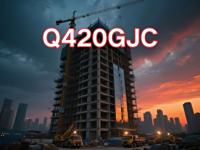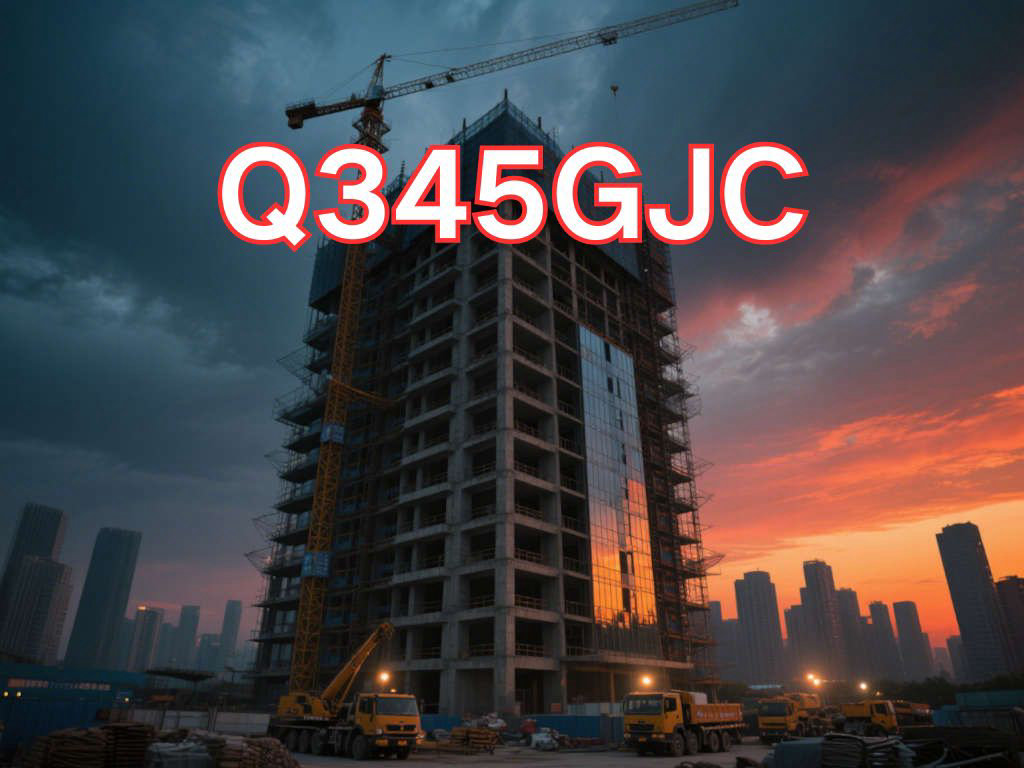

Q420GJC
Q420GJC is a high-strength steel plate specifically designed for building and construction applications. Its designation follows the Chinese national standard (GB) steel nomenclature system and is engineered for modern high-rise and super high-rise buildings, as well as large-span and heavy-load structural systems. It is widely used in primary structural components such as main frame columns, transfer beams, trusses, connection plates, bridge supports, and heavy load-bearing members in industrial facilities. The "Q" stands for "Qu fu qiang du" (yield strength), indicating that the steel's primary mechanical property is defined by its yield strength. "420" denotes the specified minimum yield strength of 420 MPa at room temperature—significantly higher than medium-strength grades like Q390GJC—providing superior load-bearing capacity and resistance to deformation. "GJ" is the pinyin abbreviation for "Gong Jian Jie Gou" (building structure), clearly identifying its dedicated use in construction, distinguishing it from general structural or shipbuilding steels. The suffix "C" indicates the quality grade, meaning the steel must meet a minimum average absorbed energy of 27 J in Charpy V-notch impact testing at 0°C, ensuring adequate low-temperature toughness suitable for typical climatic conditions and enhancing structural safety under dynamic loads such as earthquakes.
The main characteristics of Q420GJC steel plate include high strength, excellent overall mechanical properties, and good weldability. Its chemical composition is based on carbon and manganese, with the addition of microalloying elements such as niobium, vanadium, and titanium. These elements enhance strength through grain refinement, precipitation hardening, and controlled rolling and cooling processes, while maintaining a low carbon equivalent (CEV) to ensure good weldability. It is compatible with various welding processes, including submerged arc welding (SAW) and gas metal arc welding (GMAW), producing stable, crack-resistant weld joints. The steel is typically produced via controlled rolling or normalization followed by tempering, resulting in fine grains and a uniform microstructure with consistent mechanical properties. The tensile strength ranges from 550 to 720 MPa, with elongation (A) ≥18%, providing sufficient ductility to absorb energy during seismic events, thereby improving structural ductility and earthquake resistance. Additionally, Q420GJC exhibits good hot and cold workability and excellent thickness-direction properties (Z-direction properties), effectively preventing lamellar tearing, making it ideal for complex joints and thick-section welded structures.
Q420GJC is widely used in large public buildings with high seismic requirements and heavy loading conditions, such as super high-rise office towers, large stadiums, exhibition centers, transportation hubs, and auxiliary structures in nuclear power plants. Compared to Q390GJC, Q420GJC offers higher strength, enabling further reduction in structural weight, optimization of cross-sectional dimensions, improved space utilization, and reduced foundation loads, delivering significant economic and social benefits.
The current standard for Q420GJC steel plate is the Chinese national standard GB/T 19879-2023 "Steel Plates for Building Structures", released and effective in 2023. This standard comprehensively specifies grades, chemical composition, mechanical properties, technological properties, impact toughness, Z-direction properties, and inspection rules, serving as a key technical reference for structural design and construction. Due to its excellent overall performance, Q420GJC has become a critical material in modern high-performance building structures.

Ultrasonic Testing (UT)
A key non-destructive testing technique that uses high-frequency sound waves to detect internal flaws in steel plates. The probe emits sound waves, which reflect when encountering defects such as cracks or inclusions. The receiver captures the echoes, enabling precise determination of defect location and size. With high sensitivity, strong penetration, and fast inspection speed, UT effectively ensures internal quality, widely used in the production of heavy plates, pressure vessel plates, and other high-end products to guarantee safety and reliability.

Magnetic Particle Testing (MT)
A common surface inspection method that magnetizes the workpiece, causing leakage magnetic fields at surface or near-surface defects like cracks or inclusions, which attract magnetic particles to form visible indications. Simple to operate and highly sensitive, MT is suitable for rapid inspection of surface and near-surface flaws in ferromagnetic materials, widely used for online or offline inspection of plate edges, ends, and welds, ensuring product quality and safety.

Penetrant Testing (PT)
A non-destructive method for detecting surface-breaking flaws. A penetrant liquid is applied to the cleaned steel surface, allowing it to seep into defects such as cracks or pores. After removing excess penetrant, a developer is applied, causing the trapped penetrant to bleed out and form visible indications. Simple and cost-effective, PT is suitable for inspecting surface defects in various non-porous materials, commonly used for welds, castings, and complex components, effectively ensuring surface quality of steel plates.






